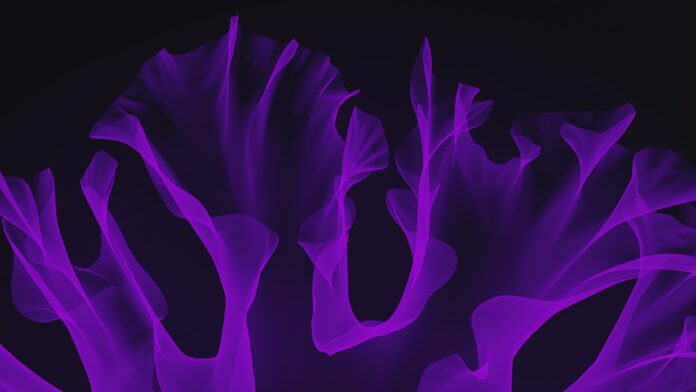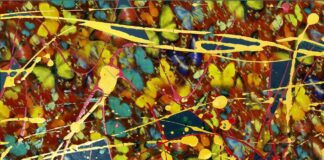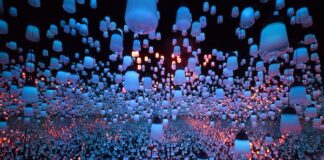A voxel, a term derived from “volume element,” stands as a fundamental building block in the realm of three-dimensional computer graphics and medical imaging. As we delve into the world of voxels, we uncover the intricate tapestry that they weave within virtual landscapes and medical diagnostics. A voxel isn’t just a mere pixel in three dimensions; it’s a unit of measurement that bridges the gap between the digital and the physical, revolutionizing how we represent and interact with the world around us.
In the realm of computer graphics, a voxel emerges as a captivating entity that enables the creation of intricate three-dimensional worlds. Just as a pixel forms the mosaic of an image on a two-dimensional plane, a voxel forms the foundational grid upon which three-dimensional objects and environments come to life. This leap from two to three dimensions opens doors to a world of depth, realism, and interactivity, enabling artists, game developers, and architects to sculpt immersive experiences that resonate with users on a visceral level. The concept of a voxel speaks to the power of digital creation, where the fusion of individual elements results in a collective whole that can evoke emotions, tell stories, and spark wonder.
Voxels find their place not only within the realms of creativity but also within the precision world of medical imaging. In the context of medical diagnostics, a voxel is a cornerstone of three-dimensional reconstruction, enabling physicians to peer inside the human body with unprecedented detail. Just as a sculptor molds clay to reveal the form within, medical professionals utilize voxels to unveil the intricacies of organs, tissues, and anomalies that may lie beneath the surface. This blend of technology and medicine results in diagnostic tools that provide insights that were once unimaginable, allowing for early detection, accurate assessment, and informed decision-making in patient care.
Within the virtual realm, a voxel takes on the role of a digital building block that constructs the immersive environments of virtual reality (VR) and augmented reality (AR). Just as physical bricks come together to shape structures, voxels unite to form the digital landscapes that users can explore, interact with, and even modify. This marriage of voxels and virtual reality amplifies the sense of presence and agency, inviting users to step into new worlds and engage with their surroundings in ways that blur the line between the real and the digital. The concept of a voxel resonates with the idea of transformation, where a collection of basic elements becomes a canvas for boundless exploration and creativity.
In the world of medicine, the role of voxels extends beyond diagnostics to treatment planning and research. Physicians leverage voxel-based data to simulate and plan intricate surgical procedures, mapping out pathways and strategies with surgical precision. Additionally, researchers employ the power of voxels to study and visualize complex anatomical structures, advancing our understanding of human physiology and contributing to medical breakthroughs. This fusion of medicine and technology underscores the capacity of voxels to act as bridges that connect scientific inquiry with tangible outcomes that benefit human health.
Voxels are more than mere units of measurement; they encapsulate the essence of how the digital world intersects with the physical realm. In computer graphics, they embody the potential for creative expression and storytelling within virtual landscapes. In medical imaging, they serve as the foundational elements that reveal the inner workings of the human body. In virtual reality, they form the building blocks of immersive experiences that transcend the boundaries of the real world. In medicine and research, they empower physicians and scientists to explore new frontiers of knowledge and healing.
The beauty of voxels lies in their versatility and their ability to bridge gaps – between two and three dimensions, between the digital and the physical, and between creativity and practicality. As we continue to harness the potential of voxels, we unravel their capacity to shape how we perceive, interact with, and understand the world around us. In essence, a voxel isn’t just a unit of measurement; it’s a glimpse into the intricate interplay between technology, imagination, and the human experience.
Three-Dimensional Building Blocks:
Voxels serve as fundamental units in three-dimensional spaces, analogous to pixels in two-dimensional images, allowing for the creation of intricate 3D environments and objects.
Medical Imaging Precision:
In the field of medical imaging, voxels play a crucial role in constructing three-dimensional representations of anatomical structures, enabling accurate diagnostics and treatment planning.
Virtual Reality Immersion:
Voxels form the digital foundations of immersive virtual reality experiences, enabling users to explore and interact with digital worlds in ways that blur the line between reality and simulation.
Diagnostic Precision:
In medical diagnostics, voxels provide the granularity needed to accurately visualize and analyze internal bodily structures, aiding in early detection and informed decision-making.
Creative Expression:
Voxels are essential in computer graphics for artists, game developers, and architects, as they facilitate the creation of intricate 3D objects and environments, allowing for immersive storytelling and creative expression.
Voxels, the digital building blocks that underpin the realm of three-dimensional spaces, stand as a testament to the fusion of technology and imagination. As we delve further into the world of voxels, we discover their multifaceted nature and the myriad ways they shape our interactions with the digital landscape. Beyond their role in medical imaging, virtual reality, and creative expression, voxels hold a story that unfolds through the lens of innovation, collaboration, and the ever-expanding boundaries of human creativity.
In the universe of digital creation, voxels emerge as the elemental particles that compose the intricate tapestry of virtual realms. Just as atoms form the basis of matter in the physical world, voxels constitute the building blocks of digital objects and environments. Yet, voxels transcend the confines of reality, allowing creators to sculpt worlds that defy the laws of physics and logic. Through the careful arrangement of these digital particles, artists, game developers, and designers breathe life into virtual spaces that captivate the senses and transport users to realms limited only by the boundaries of human imagination.
The evolution of voxels echoes the trajectory of technology itself. What once existed as simple units of measurement has evolved into a dynamic language through which we communicate with virtual environments. The pixelated landscapes of early video games have given way to intricate voxel-based simulations that mimic the complexities of the natural world. Voxel-based terrain generation, for instance, allows for the creation of vast and varied landscapes that mimic the rolling hills, towering mountains, and intricate ecosystems found in reality. This evolution showcases the remarkable capacity of voxels to evolve alongside technological advancements, breathing life into digital environments that continue to push the boundaries of visual fidelity and realism.
In the realm of interactive experiences, voxels have become synonymous with the realm of virtual reality (VR) and augmented reality (AR). These immersive technologies leverage the inherent granularity of voxels to create environments that are not only visually captivating but also responsive to user interactions. As users don VR headsets or engage with AR applications, voxels become the conduits through which the virtual and the physical intertwine. Whether exploring a fantastical landscape in VR or overlaying digital information onto the physical world in AR, voxels play a pivotal role in shaping the sense of presence and interactivity that define these technologies.
The collaborative nature of voxel-based creation is a testament to the power of collective imagination. Online platforms and communities provide spaces where creators can share voxel assets, collaborate on projects, and push the boundaries of what is possible. Through this collective effort, voxels become more than individual units; they become a language of shared expression that transcends geographical boundaries. This sense of unity and shared purpose underscores the human drive to create, explore, and collaborate, reflecting the capacity of voxels to foster connections that span the digital landscape.
The realm of education and scientific visualization also benefits from the capacity of voxels to simplify complexity. From molecular simulations to architectural renderings, voxels provide a tangible means of visualizing intricate concepts and structures. In educational settings, voxel-based models offer students a more intuitive understanding of complex subjects, allowing them to manipulate and explore concepts in ways that foster deeper engagement and comprehension. This accessibility underscores the democratic nature of voxel-based representation, where intricate ideas become accessible to learners of all backgrounds.
As technology continues to advance, the role of voxels expands into uncharted territories. Volumetric displays, for instance, explore the possibilities of presenting 3D content without the need for special glasses or headsets. These displays utilize arrays of voxels to generate three-dimensional imagery that can be viewed from different angles, adding a new dimension to how we experience digital content. This innovation not only pushes the boundaries of display technology but also underscores the potential of voxels to reshape how we perceive and interact with the digital world.
In the intersection of art and technology, voxel artistry has emerged as a unique form of expression. Voxel artists harness the inherent constraints of voxels – their blocky, grid-like nature – to create stunning visual compositions that evoke nostalgia, creativity, and a sense of wonder. Much like pointillism in traditional art, voxel artistry involves the meticulous arrangement of individual units to form intricate scenes that captivate the eye and ignite the imagination. This fusion of technology and artistic expression showcases the versatility of voxels as a medium through which creators can communicate emotions, stories, and ideas.
In conclusion, voxels transcend their technical origins to become vehicles of innovation, connection, and expression. They shape the digital landscapes of virtual reality, empower creators to bring their imaginations to life, and provide a common language through which collaborative endeavors flourish. As technology and human creativity continue to intersect, voxels stand as a testament to the boundless potential of the digital canvas and the ever-evolving ways in which we navigate, interact with, and reshape the realms of both reality and the imagination.














